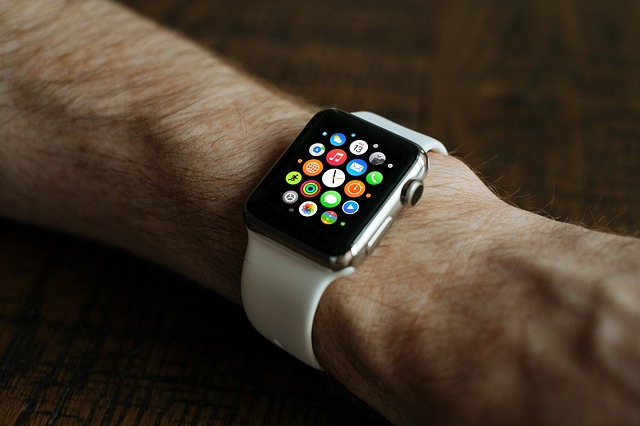Technology is increasingly becoming focused on improving and simplifying user experience. With the advent of smartphones, more and more services are reaching users through apps. One more step in this direction brings us to wearable technology.
The most common examples in wearables are of course smartwatches and fitness trackers. According to eMarketer, 63.7 million US adults will use smartwatches and fitness trackers in 2016, with penetration among US adults is expected to double by 2018, to 81.7 million users, writes Alex Bray, retail channels director at Misys, in an article on Payments Source.
Further adding to this innovation are banks – according to Misys’ research, 15% of banks already have or are currently rolling out wearable apps. 72% of banks say wearables are on their roadmap for the next three years and 66% say proximity payments are the most attractive capability of wearables.
Bray explains that in the future, merchant’s price and customer’s acceptance will be the only mandatory inputs for a transaction. He says that payments-focused wearable technology will improve customer experience on the basis of two key attributes:
“First, wearables can utilise proximity and geolocation to provide protected and convenient transactions. Second, wearables will be able to use biometrics to authenticate users.”
These attributes will ensure that wearable enabled transactions will be faster and more secure than traditional payment options. Bray explains that while geolocation will help to confirm that a customer is in the correct place for the transaction they are trying to make, confirming a customer’s proximity to the correct smartphone will add an extra layer of confidence about customer’s identity. The biometrics capabilities of wearables are still evolving and could take many forms, for example, a form of vein pattern recognition patented by Apple, finger print scanning etc. These will enable the worn device to authenticate a user at all times, providing excellent security for payments.
“As retailers, consumers and banks become more comfortable with the adoption of new technologies, wearables are likely to sound the death knell for cards as wearable optimized payments will rapidly become a necessity for all financial institutions”, Bray concludes.
Wearable Technology - The Future Of Payments

Tuesday, December 29, 2015 12:27 PM UTC
Editor's Picks
- Market Data
Most Popular



 Apple Alerts EU Regulators That Apple Ads and Maps Meet DMA Gatekeeper Thresholds
Apple Alerts EU Regulators That Apple Ads and Maps Meet DMA Gatekeeper Thresholds  Nexperia Urges China Division to Resume Chip Production as Supply Risks Mount
Nexperia Urges China Division to Resume Chip Production as Supply Risks Mount  Baidu Cuts Jobs as AI Competition and Ad Revenue Slump Intensify
Baidu Cuts Jobs as AI Competition and Ad Revenue Slump Intensify  Apple Leads Singles’ Day Smartphone Sales as iPhone 17 Demand Surges
Apple Leads Singles’ Day Smartphone Sales as iPhone 17 Demand Surges  Samsung Launches Galaxy Z TriFold to Elevate Its Position in the Foldable Smartphone Market
Samsung Launches Galaxy Z TriFold to Elevate Its Position in the Foldable Smartphone Market  AI-Guided Drones Transform Ukraine’s Battlefield Strategy
AI-Guided Drones Transform Ukraine’s Battlefield Strategy  Microchip Technology Boosts Q3 Outlook on Strong Bookings Momentum
Microchip Technology Boosts Q3 Outlook on Strong Bookings Momentum  TSMC Accuses Former Executive of Leaking Trade Secrets as Taiwan Prosecutors Launch Investigation
TSMC Accuses Former Executive of Leaking Trade Secrets as Taiwan Prosecutors Launch Investigation  Anthropic Reportedly Taps Wilson Sonsini as It Prepares for a Potential 2026 IPO
Anthropic Reportedly Taps Wilson Sonsini as It Prepares for a Potential 2026 IPO  Norway’s Wealth Fund Backs Shareholder Push for Microsoft Human-Rights Risk Report
Norway’s Wealth Fund Backs Shareholder Push for Microsoft Human-Rights Risk Report  Vietnam’s Growing Use of Chinese 5G Technology Raises Western Concerns
Vietnam’s Growing Use of Chinese 5G Technology Raises Western Concerns  Trump Administration to Secure Equity Stake in Pat Gelsinger’s XLight Startup
Trump Administration to Secure Equity Stake in Pat Gelsinger’s XLight Startup  Apple Appoints Amar Subramanya as New Vice President of AI Amid Push to Accelerate Innovation
Apple Appoints Amar Subramanya as New Vice President of AI Amid Push to Accelerate Innovation  Senate Sets December 8 Vote on Trump’s NASA Nominee Jared Isaacman
Senate Sets December 8 Vote on Trump’s NASA Nominee Jared Isaacman  Firelight Launches as First XRP Staking Platform on Flare, Introduces DeFi Cover Feature
Firelight Launches as First XRP Staking Platform on Flare, Introduces DeFi Cover Feature  Wikipedia Pushes for AI Licensing Deals as Jimmy Wales Calls for Fair Compensation
Wikipedia Pushes for AI Licensing Deals as Jimmy Wales Calls for Fair Compensation  EU Prepares Antitrust Probe Into Meta’s AI Integration on WhatsApp
EU Prepares Antitrust Probe Into Meta’s AI Integration on WhatsApp 


























